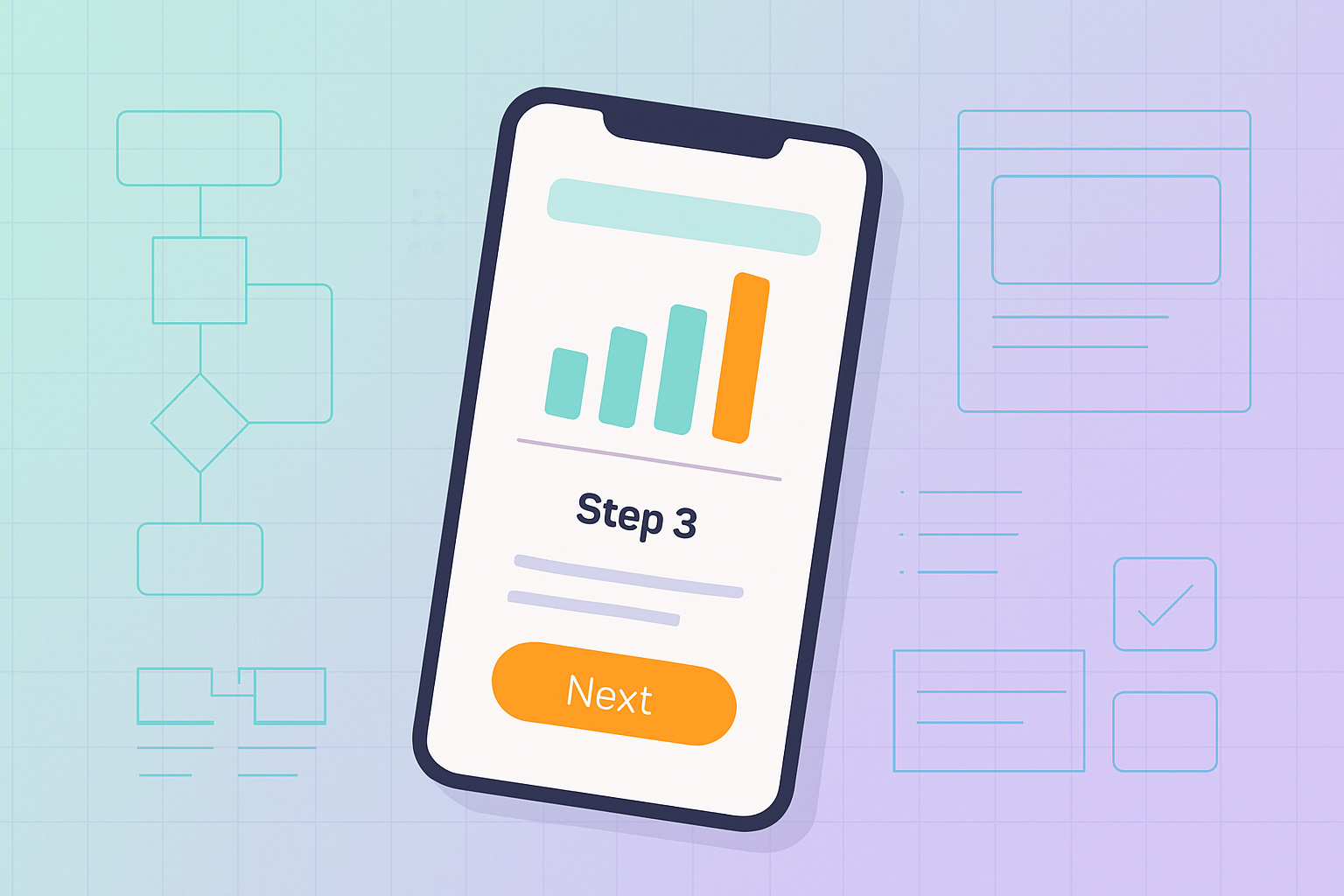The Real Cost of Kotlin Development in 2024: Integration, Maintenance & Expert Guidance
Let’s cut through the marketing fluff and get straight to the point: Kotlin is a powerful language that’s transforming Android development, but implementing it effectively requires careful planning, technical expertise, and realistic budgeting.
I’ve spent the past decade leading mobile development teams and watching Kotlin evolve from an interesting alternative to Java into Google’s preferred language for Android. During this time, I’ve witnessed countless organizations struggle with the same question: “What’s the real cost of adopting Kotlin?”
The answer isn’t as straightforward as most tech articles would have you believe. The true cost extends far beyond licensing fees (which are zero) and involves nuanced considerations about your existing codebase, team composition, performance requirements, and long-term maintenance strategy.
This guide will provide a candid, expert assessment of what Kotlin actually costs to implement, maintain, and optimize for modern mobile applications.
Introduction to Kotlin: Beyond the Hype
Kotlin isn’t just another programming language—it represents a significant evolution in how we approach Android development. Created by JetBrains in 2011 and later open-sourced, Kotlin addressed specific pain points that had plagued Java developers for years.
What makes Kotlin particularly interesting is how it balances pragmatism with innovation. Unlike some languages that introduce radical paradigm shifts, Kotlin enhances familiar object-oriented approaches with functional programming concepts, null safety, and concise syntax.
The language’s key advantages include:
-
Dramatically reduced boilerplate: Kotlin eliminates repetitive coding patterns that bloat Java codebases. Data classes, extension functions, and smart casts significantly reduce the amount of code you need to write and maintain.
-
Null safety by design: The type system’s distinction between nullable and non-nullable references catches potential NPEs at compile time rather than runtime—eliminating one of Android’s most common crash sources.
-
Java interoperability: Kotlin’s seamless integration with existing Java code enables incremental adoption rather than requiring massive rewrites.
-
Multiplatform potential: Through Kotlin Multiplatform, developers can share business logic across Android and iOS while maintaining native UI implementations—a compelling cost-saving approach for cross-platform development.
But Kotlin’s benefits come with trade-offs that many organizations fail to anticipate. Understanding these nuances is crucial for accurate cost assessment and successful implementation.
The Real Financial Picture: What Using Kotlin Actually Costs
When evaluating Kotlin’s cost impact, we need to look beyond simple licensing considerations to understand the complete financial picture.
Direct Costs: The Good News
From a licensing perspective, Kotlin is genuinely free. Released under the Apache 2.0 license, it can be used without royalties or licensing fees in both commercial and non-commercial applications.
The development toolchain is similarly accessible:
- Android Studio provides first-class Kotlin support at no additional cost
- The Kotlin plugin for IntelliJ IDEA works perfectly in the free Community Edition
- Standard build tools like Gradle integrate seamlessly with Kotlin
For organizations already investing in Android development, the incremental tooling cost is essentially zero—a rare instance where marketing claims about “free” technology actually hold true.
While direct costs are minimal, Kotlin introduces performance considerations that can impact your application’s resource usage, battery consumption, and user experience:
Compilation Overhead
Kotlin compilation typically runs 10-15% slower than equivalent Java code during initial builds. While incremental compilation mitigates this during development, CI/CD pipelines may require optimization to maintain build efficiency.
Modern Kotlin versions produce bytecode that performs comparably to Java in most scenarios, but certain features carry overhead:
- Companion object methods: These require additional synthetic accessor methods to access private fields, increasing method count.
- Extension functions: Heavy use can impact method resolution performance.
- Lambda implementations: These create additional object instances unless properly optimized.
As detailed in Bladecoder’s analysis, “Exploring Kotlin’s Hidden Costs,” these overhead sources are particularly relevant for Android development on older or lower-end devices where CPU and memory constraints are more pronounced.
APK Size Impact
The Kotlin runtime adds approximately 1MB to application size. While modern app optimization techniques reduce this impact, it still represents an overhead—particularly for applications targeting markets with limited connectivity or older devices.
For most applications, these performance considerations represent a reasonable trade-off for Kotlin’s productivity benefits. However, applications with extreme performance requirements need to carefully evaluate and mitigate these factors.
The True Cost: Developer Experience and Transition
The most significant cost of Kotlin adoption isn’t technical—it’s human. Transitioning a team from Java to Kotlin invariably impacts productivity during the learning phase:
- Onboarding timeline: Most Java developers become productive in Kotlin within 1-2 weeks, but mastering idioms and advanced features takes months.
- Code consistency challenges: During transition periods, maintaining consistent patterns across mixed Java/Kotlin codebases requires discipline and tooling support.
- Architectural rethinking: Truly leveraging Kotlin often means reconsidering architectural approaches to take advantage of language features.
Organizations frequently underestimate these transition costs, leading to project delays and budget overruns during Kotlin adoption. Realistic planning requires accounting for this temporary productivity dip before realizing Kotlin’s efficiency gains.
The Integration Reality: What Goes Into Adding Kotlin to Your App
Integrating Kotlin effectively requires careful planning, methodical execution, and attention to both technical and organizational factors.
Strategic Approaches to Kotlin Integration
Organizations typically follow one of three integration paths:
-
New project implementation: Building entirely in Kotlin from scratch—the cleanest approach but limited to new development.
-
Incremental adoption: Gradually introducing Kotlin alongside existing Java code, often following the “new code in Kotlin, existing code in Java” pattern.
-
Multiplatform implementation: Using Kotlin to share business logic across Android and iOS while maintaining platform-specific UI layers.
Each approach presents distinct challenges. Incremental adoption—the most common path for established applications—requires particularly careful planning to maintain code quality and performance during the transition period.
Technical Implementation Requirements
Beyond the high-level strategy, successful Kotlin integration involves addressing several technical components:
Build System Configuration
Properly configuring Gradle for mixed Java-Kotlin projects requires:
- Correct application of the Kotlin Android plugin
- Appropriate source set configuration
- Optimization of compilation parameters
- Dependency management for Kotlin-specific libraries
For large applications, build system configuration becomes increasingly complex. As detailed in a ProAndroidDev case study, projects with over 1000 Gradle modules require careful build optimization to maintain reasonable compilation times.
Testing Infrastructure Adaptation
Transitioning your testing approach to accommodate Kotlin involves:
- Updating test frameworks for Kotlin syntax
- Adapting mocking approaches for Kotlin features
- Potentially refactoring test architecture to leverage Kotlin’s testing advantages
Many organizations overlook testing infrastructure updates, leading to coverage gaps during transition periods.
Architecture Optimization
Truly effective Kotlin implementation often requires architectural adjustments:
- Applying Kotlin-specific design patterns
- Leveraging coroutines for asynchronous operations
- Implementing extensive null safety beyond the compiler checks
- Potentially refactoring for functional programming approaches
When integrating with analytics platforms like Firebase Analytics or Amplitude, for example, Kotlin extension functions can significantly improve code organization and maintainability.
Real-World Integration Challenges
Based on my experience leading dozens of Kotlin integrations, these common challenges emerge regardless of organization size:
Interoperability Edge Cases
While Java-Kotlin interoperability is generally good, edge cases create friction:
- Generic type conversion between languages
- Default parameters handling at the Java/Kotlin boundary
- Static utility methods and their Kotlin equivalents
- SAM conversion behaviors
These edge cases often cause unexpected bugs that delay integration timelines.
Team Knowledge Disparity
Different developers adopt Kotlin at different rates, creating knowledge imbalances:
- Senior developers may resist changing established patterns
- Junior developers might over-apply Kotlin features without understanding implications
- Style and approach inconsistencies emerge across the codebase
This knowledge disparity requires active management through code reviews, pair programming, and dedicated learning time.
For teams pursuing Kotlin Multiplatform, additional challenges arise:
- Managing platform-specific API differences
- Structuring code to maximize sharing while respecting platform boundaries
- Coordinating development between platform teams
- Implementing testing strategies that work across platforms
When integrating with platform-specific services like RevenueCat for iOS and Android subscription management, careful abstraction design becomes critical for multiplatform success.
Staffing Realities: The Cost of Kotlin Expertise
The human component of Kotlin adoption often represents the largest expense—and the most significant variable in successful implementation.
The Kotlin Talent Market
The market for Kotlin developers has evolved dramatically in recent years:
-
Scarcity: Despite growing adoption, experienced Kotlin developers remain relatively scarce, particularly those with multiplatform expertise.
-
Premium compensation: Junior Kotlin developers typically command $70,000-$90,000 annually in US markets, while senior developers with multiplatform experience often demand $130,000-$180,000+.
-
Geographic variation: Rates vary significantly by location, with major tech hubs commanding premiums of 30-50% above other regions.
This talent landscape makes staffing a significant consideration in Kotlin adoption budgeting.
The Quality Developer Profile
Effective Kotlin developers demonstrate several key characteristics beyond basic language proficiency:
- Mastery of both object-oriented and functional programming paradigms
- Deep understanding of the Kotlin type system and its safety features
- Experience with coroutines and Flow for asynchronous programming
- Familiarity with Kotlin-specific architectural patterns
- Knowledge of potential performance pitfalls and optimization techniques
When integrating Kotlin with authentication systems like Firebase Auth or payment processing via Stripe Billing, these advanced skills become particularly important for security and reliability.
External Development Resources
Given the specialized nature of Kotlin development, many organizations leverage external resources:
-
Specialized talent platforms: Services like Toptal provide access to pre-vetted Kotlin developers, with typical hourly rates ranging from $80-150 depending on experience.
-
Development agencies: Mobile specialists provide end-to-end Kotlin implementation services combining technical expertise with project management. These engagements typically range from $20,000 for small applications to $150,000+ for enterprise implementations.
-
Training and consulting: Some organizations retain Kotlin experts to train internal teams and provide architectural guidance, typically at rates of $150-250 per hour.
For many organizations, combining internal teams with external expertise provides the most cost-effective approach to Kotlin adoption.
At MetaCTO, we’ve guided dozens of organizations through Kotlin implementation. Our approach isn’t about providing generic development services—it’s about applying specialized expertise to reduce risk, accelerate adoption, and maximize return on your Kotlin investment.
The Cost of DIY Implementation
Organizations attempting Kotlin integration without specialized expertise typically encounter several costly challenges:
-
Architectural missteps: Without experience in Kotlin-specific patterns, teams implement solutions that fail to leverage the language’s capabilities—requiring expensive refactoring later.
-
Performance bottlenecks: Improper implementation of Kotlin features can create significant performance issues that impact user experience and consume engineering time to diagnose and fix.
-
Team productivity disruption: Poorly planned Kotlin transitions significantly reduce development velocity during the adaptation phase, extending project timelines and increasing costs.
-
Technical debt accumulation: Inconsistent implementation approaches during transition create maintenance challenges that persist long after the initial integration.
These challenges frequently increase both the direct cost and opportunity cost of Kotlin adoption when teams lack specialized experience.
How We Optimize Kotlin Implementation
Our Kotlin integration approach focuses on maximizing value while minimizing disruption:
-
Strategic assessment: We evaluate your existing codebase, team capabilities, and business objectives to create a tailored Kotlin integration roadmap that minimizes disruption while maximizing benefit.
-
Architecture optimization: Our experts design Kotlin implementations that leverage language benefits while maintaining compatibility with existing systems and integrations like Firebase and CleverTap.
-
Team enablement: Through hands-on training and pair programming, we accelerate your team’s Kotlin proficiency, focusing on practical skills rather than theoretical knowledge.
-
Implementation support: Our developers can augment your team for critical path components or handle complete implementation, depending on your needs and internal resources.
-
Performance optimization: We apply industry best practices to ensure your Kotlin codebase delivers optimal performance across all target devices, from flagship phones to entry-level models.
This approach reduces implementation risks while accelerating time-to-market for Kotlin-based applications.
Beyond Code: Strategic Technology Partnership
Our most successful Kotlin implementations extend beyond technical implementation to strategic technology partnership:
-
We help clients evaluate whether approaches like Kotlin Multiplatform make economic sense for their specific business requirements.
-
We integrate Kotlin-based solutions with analytics platforms like Mixpanel and AppsFlyer to ensure business intelligence capabilities aren’t compromised during transition.
-
We provide fractional CTO services to guide ongoing technical decisions as your Kotlin implementation matures and evolves.
This holistic approach ensures your Kotlin investment delivers both technical excellence and business value.
After examining the multifaceted costs of Kotlin adoption, the central question remains: Does the investment make economic sense for your organization?
The answer depends on several factors:
-
Application complexity: More complex applications generally benefit more from Kotlin’s safety features and reduced boilerplate.
-
Team composition: Teams with Java experience typically transition more smoothly than those coming from other language backgrounds.
-
Performance requirements: Applications with stringent performance needs require more careful Kotlin implementation but can still benefit substantially.
-
Cross-platform ambitions: Organizations developing for both Android and iOS can realize significant cost savings through Kotlin Multiplatform, though implementation complexity increases.
-
Maintenance horizon: Longer application lifespans generally justify higher upfront investment in Kotlin adoption.
For most organizations developing Android applications with maintenance horizons beyond 18 months, Kotlin represents a sound investment despite the transition costs. The productivity benefits, code quality improvements, and talent attraction advantages typically outweigh the implementation expenses over time.
However, this calculation changes for short-term projects, applications with extreme performance constraints, or organizations with significant investments in alternative cross-platform technologies.
Conclusion: Maximizing Your Kotlin Investment
Kotlin represents a strategic investment in your mobile application’s future. When implemented effectively, it delivers substantial benefits through improved developer productivity, code quality, and potential cross-platform sharing.
Throughout this article, we’ve explored the nuanced costs of Kotlin adoption, from performance considerations and learning curves to integration challenges and staffing implications. While Kotlin’s zero licensing cost eliminates direct expenses, organizations must carefully account for the indirect costs of implementation, optimization, and team development.
The most successful Kotlin implementations balance technical considerations with strategic business objectives, creating a foundation for sustainable mobile application development. Whether you’re launching a new application, migrating an existing codebase, or exploring multiplatform opportunities, the right approach to Kotlin adoption can significantly impact your project’s success.
At MetaCTO, we’re committed to helping organizations leverage Kotlin effectively to achieve their mobile app objectives. Our team combines deep Kotlin expertise with practical experience integrating the language with critical services like Firebase Analytics, Magic Links, and Azure ML.
Ready to explore how Kotlin can improve your mobile development process? Contact our Kotlin experts today to schedule a consultation and discover how our Kotlin development services can help you launch your next project in as little as 90 days.




